It's summertime! Don't feel like studying in this heat? Well, that's understandable, but we've got a collection of cool Japanese learning resources for you. We hope these resources feel like a gentle summer breeze that stirs up your study motivation!
- InTrip (Zen Meditation App)
- 37 Seconds
- いろどり 生活の日本語 / IRODORI Japanese for Life in Japan
- Nihongo Switch
- Casual Nihongo / カジュアル日本語
- Necota's Japanese Language Classroom
- 絵でわかる日本語
- キク日本語
- A Whisker Away
- フェルミ研究所
- Skritter
- そのまんまの日本語―自然な会話で学ぶ
- Speechling
- LIVE JapaNews24 ~日本のニュースを24時間配信
- 読書メーター
- 算数事件ファイル 小学4~6年 (おはなし推理ドリル)
- KLC Graded Reading Sets: Volumes 6-9
- 考える人のための【上級】日本語読解
InTrip (Zen Meditation App)
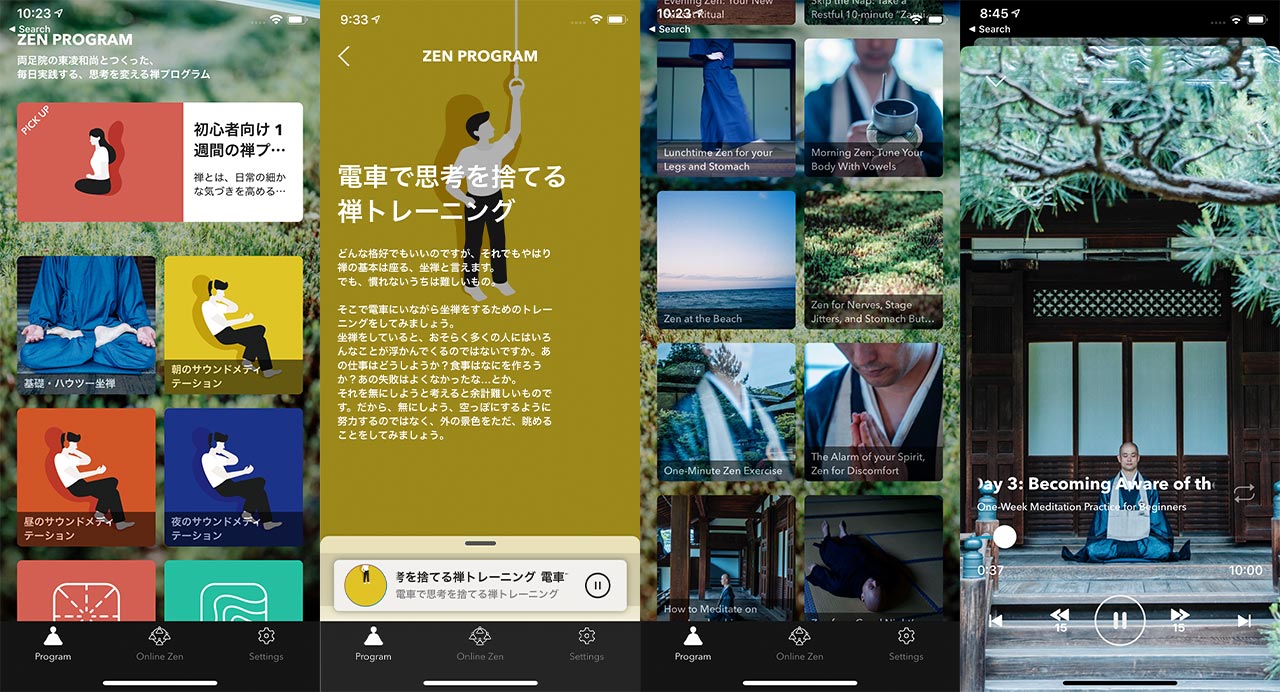
Seeing the effects of the global pandemic and other newsworthy headlines, many of us have been weighed down lately in one way or another. One of the ways of combating these feelings of anxiety is through meditation. InTrip is a zen meditation app that was released on July 7th. A longtime reader, Autumn Smith, referred us to this resource. It was made in collaboration with Buddhist High Priest, Toryo Ito, of the famous zen temple, Ryosoku-in.
This app offers guided meditation in both Japanese and English. Sessions include various meditation courses like an introductory weeklong ten-minute-a-day practice, “Shower Zen for Positivity,” “Zen for a Good Night’s Sleep,” and more. Also offered are weekly livestreamed zazen sessions in Japanese that take place at the temple.
Because of the level of vocabulary used, this app seems to be better suited for intermediate to advanced learners. If you’re a beginner, listening to a session in English and then switching to Japanese mode could help with understanding the context. Whether listening in English or Japanese, you’ll be able to learn more about zen culture and perhaps find some inner peace along the way.
37 Seconds
The title of this new movie, 37 Seconds, refers to the exact amount of time that the protagonist, Yuma Takada, couldn’t breathe after she was born. This lapse in oxygen left Yuma with the life-changing condition of cerebral palsy. At 23 years old, Yuma is determined to carve her own path, despite the setbacks that she faces due to others around her. Her mother, for instance, is overprotective, and regulates everything from Yuma’s clothing choices to her bathing practices. Yuma also works with an idol who profits from Yuma’s artwork without giving her due credit.
With all of these compounding frustrations, Yuma decides to take matters into her own hands. As she begins to branch out and engage in new experiences, she finds out more about herself and her family situation. Beyond being a good chance for Japanese practice, 37 Seconds is a must-watch coming-of-age story!
いろどり 生活の日本語 / IRODORI Japanese for Life in Japan
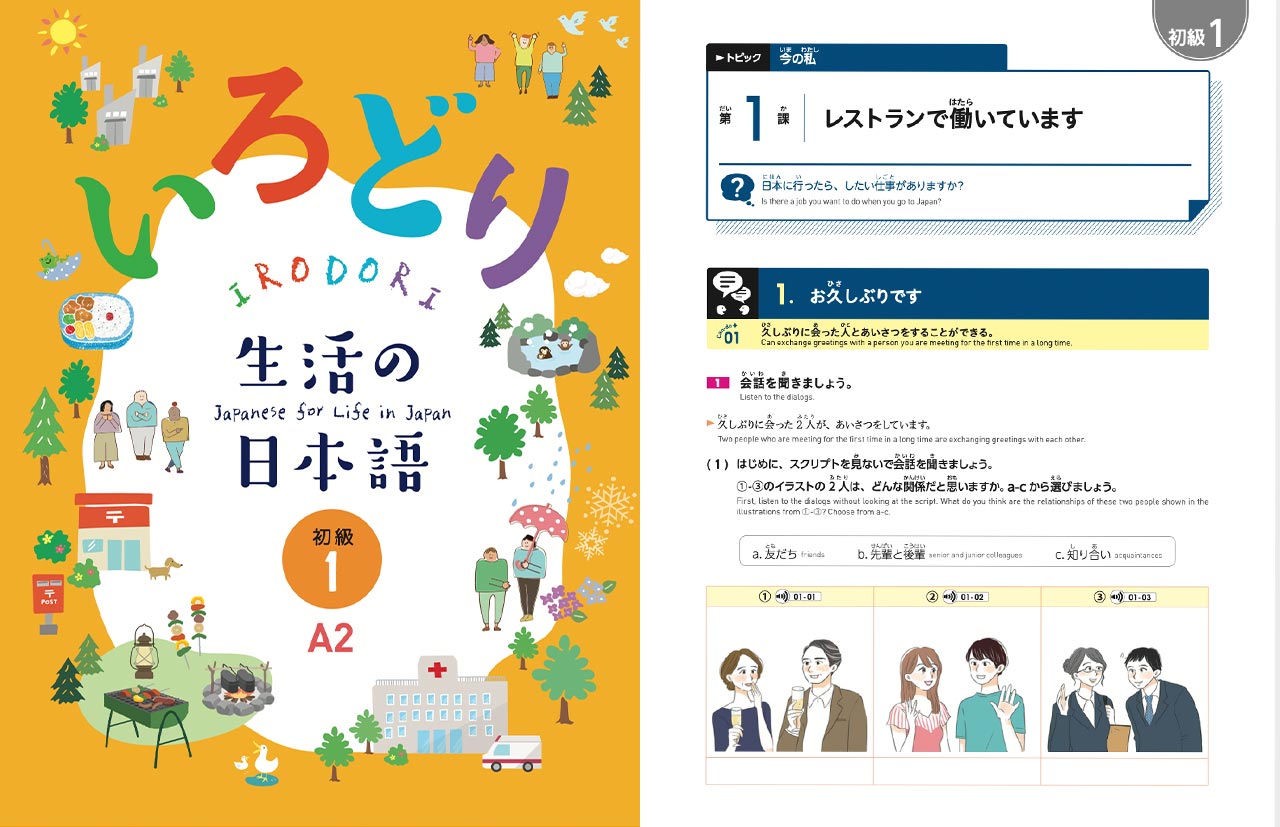
いろどり 生活の日本語 is a series of free course books available as PDFs, along with MP3 audio files, published by the Japan Foundation Japanese-Language Institute. This book is intended to help foreign residents acquire the basic Japanese communication skills that they'd need for working and living in Japan.
The content and design of the books are very high quality, and it's hard to believe that they're free!
The series is designed for learners with A1/A2 levels on the JF standard, which is based on what kind of tasks you can accomplish using Japanese, rather than how much you know about Japanese vocabulary or grammar. A1/A2 are essentially the levels of being able to say basic greetings or use simple sentences to discuss familiar subjects. いろどり aims to help Japanese learners acquire more can-dos in communication.
This course provides well-rounded material for you to gain the reading, speaking, listening, and writing skills necessary to get by and enjoy life in Japan. Each section has a practical topic like talking about your job in Japan or how to ask for help with Japanese learning.
As of summer 2020, two books are available — 初級1 (Elementary 1) and 初級2 (Elementary 2) — and it seems like another book for 入門 (Novice) will be published sometime this fall. The content and design of the books are very high quality, and it's hard to believe that they're free! If you're a beginner and looking for practical material, they're worth checking out!
Nihongo Switch

Launched at the beginning of this year, Nihongo Switch is a new podcast created by native-speaking Japanese tutor, Iku. It is aimed at intermediate learners, and the slow pace of speaking should make this accessible even for learners with a lower intermediate level. The host is also careful to enunciate clearly, and to repeat and explain terms that might be difficult for listeners.
Another major plus of this podcast series is that it includes transcripts. You can download these for free via email sign-up, or follow along directly on the YouTube videos of the podcasts.
With one episode released every week, there is already quite a selection available, with topics ranging from COVID-19, to broken hearts, to the rain. This podcast is a valuable resource for intermediate learners looking for some varied and informative listening practice!
Casual Nihongo / カジュアル日本語
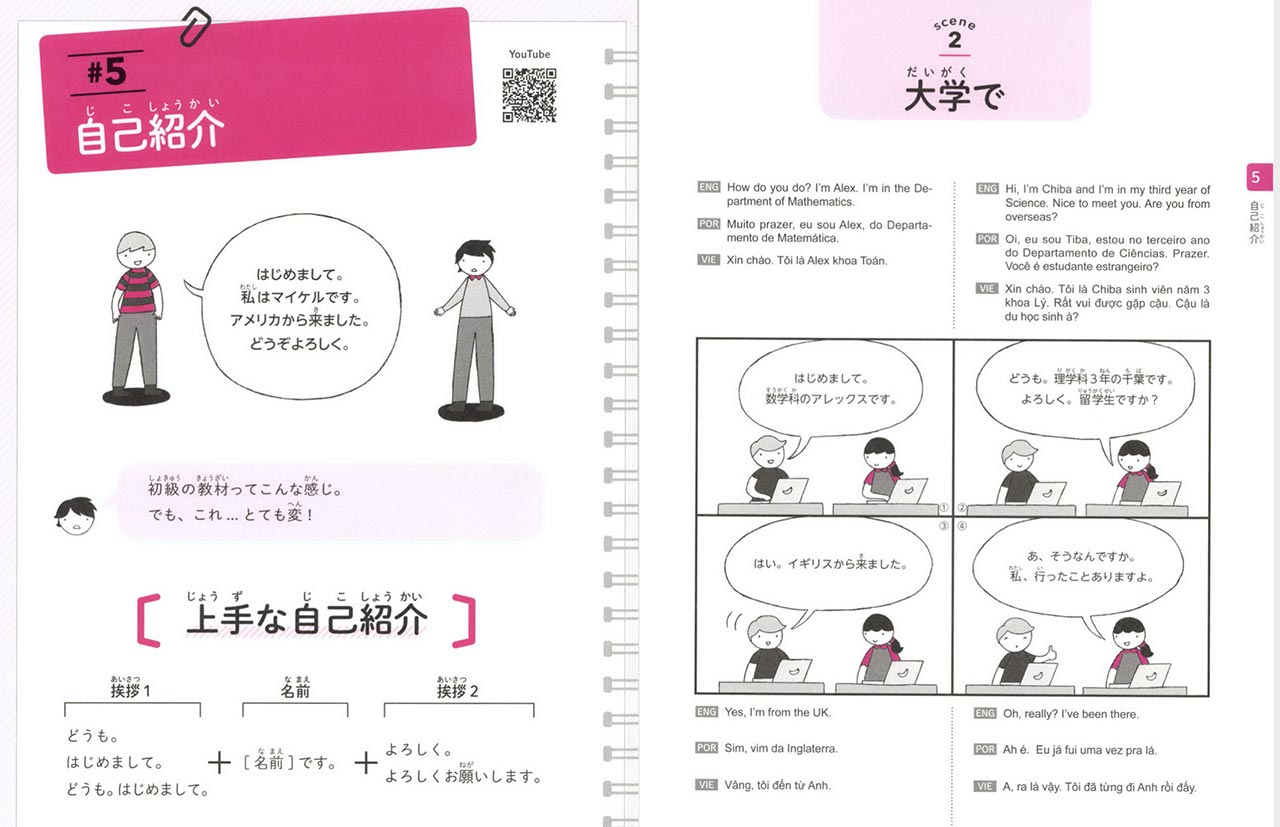
"I'm fine, thank you. And you?"
If you've even talked to a handful of Japanese people in English, you might have heard this awkward response. That's simply because this is how school textbooks teach it. For those who are now worried about what your own Japanese sounds like, Casual Nihongo would be a good book to pick up!
In second language learning, there's often a gap between what's taught in textbooks and classrooms and what it's actually like in conversation. To fill the gap, Casual Nihongo focuses on expressions that are actually used in real life. The book features topics like "さようなら is rarely used" or "へ vs に" along with a few dialogues that demonstrate the topics in situations like at college or out on a date. They also provide some open-ended exercises to come up with your own dialogues.
The creator is a native speaker of Japanese named Akkie, who runs the Japanese learning YouTube channel 三本塾.
Even though some of the content, such as the introduction of the book and the creator, has translations in English, Portuguese and Vietnamese, the main content is written in Japanese without translations. The book overall is designed for people who have passed JLPT N4 or have the equivalent proficiency to get most out of it, but the educational content is written in easy Japanese with furigana.
The creator is a native speaker of Japanese named Akkie, who runs the Japanese learning YouTube channel 三本塾. Unlike many nihongo sensei YouTubers out there, he has had actual experience of being professionally involved in Japanese education. Some of the topics have QR codes to his related videos on YouTube and you can enjoy them as supplemental materials. If you're interested, check out his YouTube channel! He simplifies concepts and explains in slow, easy-to-understand Japanese.
While we really enjoyed this book, we do wish there had been more discussion and/or audio resources for a few intonation-sensitive expressions that result in feminine or masculine nuances. Still, it is a good resource to check out, especially if you're self-taught using textbooks!
Necota's Japanese Language Classroom
Necota's Japanese Language Classroom is a YouTube channel designed for Japanese learners who are studying for different levels of the JLPT. Most of her videos are short, running between five to ten minutes.
In this channel, a native Japanese teacher, Neco Necota, explains different grammar points. She teaches entirely in Japanese, and example sentences aren't usually translated into English, so you'll likely need some understanding of basic Japanese to get the most out of this channel. However, Necota speaks slowly and clearly, a feature well-suited to beginners. She also uses stuffed animals, illustrations, gestures, and graphics to keep you interested in watching the video.
In each lesson, Necota provides lots of example sentences, using a simple "__ + __ = ___" formula to teach most grammar points. She also teaches you different contexts in which you can use the grammar while incorporating other useful expressions and vocabulary. This channel will help you understand how to use the target grammar in real life, as well as learn the meaning and nuance.
絵でわかる日本語
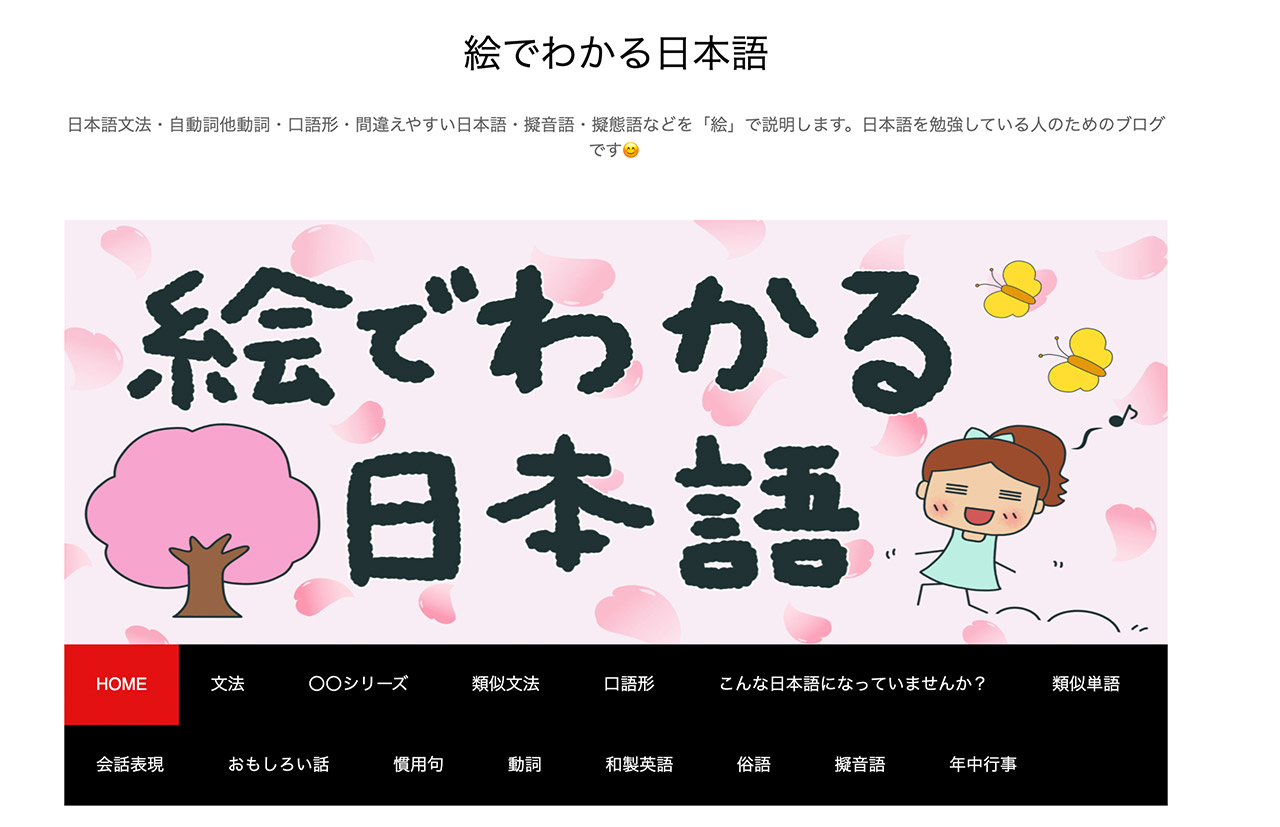
Though written entirely in Japanese, the target audience of 絵でわかる日本語 (or "Understanding Japanese through Pictures") is learners of Japanese as a foreign language. The website is made up of hundreds of short blog posts that focus on specific information, such as grammar points, common learner errors, colloquialisms, idioms, onomatopoeic language, and more. Each post features at least one cartoon, example sentences, and a good ol' fashioned explanation of the target language.
The website is probably not the most useful resource to use as a reference, as it can be very difficult to navigate. The organization is not very clear, and links to other pages, as well as ads for other websites, make it a visual maze. That aside, it is actually full of interesting information that is very useful for learners, especially if they're looking for information on language features that might not be covered in their traditional textbooks. Also, while the art is very simple, it really helps to demonstrate the concepts that each post is trying to teach. We recommend bookmarking this website and spending an hour or so just poking around and seeing what you find. You might learn something that you never expected!
キク日本語
As its name suggests, the YouTube channel キク日本語 is geared towards those who want to work on their listening skills. Azusa, the host, introduces topics related to Japanese language and culture in easy-to-understand Japanese. She explains that the reason her videos are entirely in Japanese is that as a language learner herself (studying French, German, and English), she believes that Japanese learners will progress much faster this way.
Although her channel has only been around since the middle of May, she has produced videos covering a wide range of topics. For those who are interested in the cultural component, she has videos on aspects of Japanese culture like anime, hanami, zen principles, and more. There are also videos on Japanese language where she unpacks the usage of different phrases. She believes that everyone has time for five minutes of language study a day. If you can spare the time, give it a look!
A Whisker Away
A Whisker Away, known as Nakitai Watashi wa Neko wo Kaburu in Japan, was released on Netflix on June 18. The literal translation of the Japanese title is "I want to cry so I put on a cat mask."
One of the main characters of this movie is a middle school girl, Miyo, who can transform herself into a cat using the power of a magical mask. Another main character is her classmate, Kento, who Miyo has a crush on. While Miyo is so exuberant that her friends call her "Miss Ultra Gaga," Kento is the opposite, and rejects Miyo every time she tries to get close to him. Miyo is able to be good friends with Kento only when she turns into a cat.
Miyo revels in the fact that Kento loves her when she's a cat, as well as her freedom from the restrictions she faces in real life, but she is confronted with a hard choice when she's asked to abandon human society and live as a cat for the rest of her life. The touching story and beautiful animation make this a perfect summer movie.
フェルミ研究所
フェルミ研究所, or FermiLab in English, is a YouTube channel in which you can watch videos about trivia and funny events that happen in people's lives. They have been making their videos since 2017, constantly adding new content.
Their recent videos are mostly comics with audio narration, which have become famous for their quality. Some of the topics they have covered are "tips to tell if a girl likes you," "the upsides and downsides of living in Tokyo," and "things to be careful about when getting a ride in someone's car." These comics are made for Japanese people, so they'll provide you with interesting insights into Japanese culture, society, and perspectives.
The Japanese they use in their videos is relatively easy and particularly useful for daily conversations. The audio narration helps you understand the characters' lines and narration. Most of their comics are short stories, which you can read in five minutes, so it's perfect for studying Japanese in your spare time.
Skritter
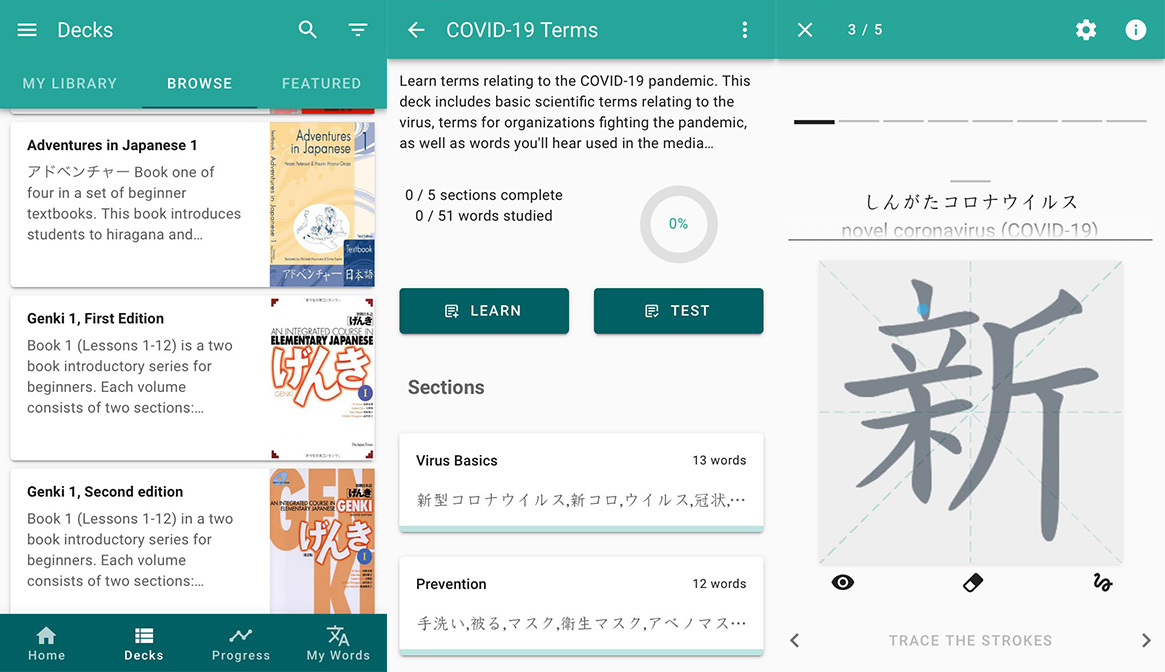
Skritter is first and foremost an app for learning how to write Japanese characters. It does a great job of teaching the stroke order, and it's very satisfying to watch your ugly strokes get transformed into beautiful typography when you write something correctly.
If you're the kind of person who likes that tactile feeling of writing and you want to make sure you've got the stroke order down, Skritter is a good option for you.
The app is built around vocabulary decks, which are further broken down into themed sections for more manageable studying. For decks based on specific textbooks, each section corresponds to a chapter or lesson in the book. Other decks, such as the "COVID-19 Terms" deck, are categorized into logical groupings based on concepts or shared meanings.
This app is great if you want to practice writing kanji. While it may not be the best way to study vocabulary in general, if you're the kind of person who likes that tactile feeling of writing and you want to make sure you've got the stroke order down, Skritter is a good option for you.
そのまんまの日本語―自然な会話で学ぶ
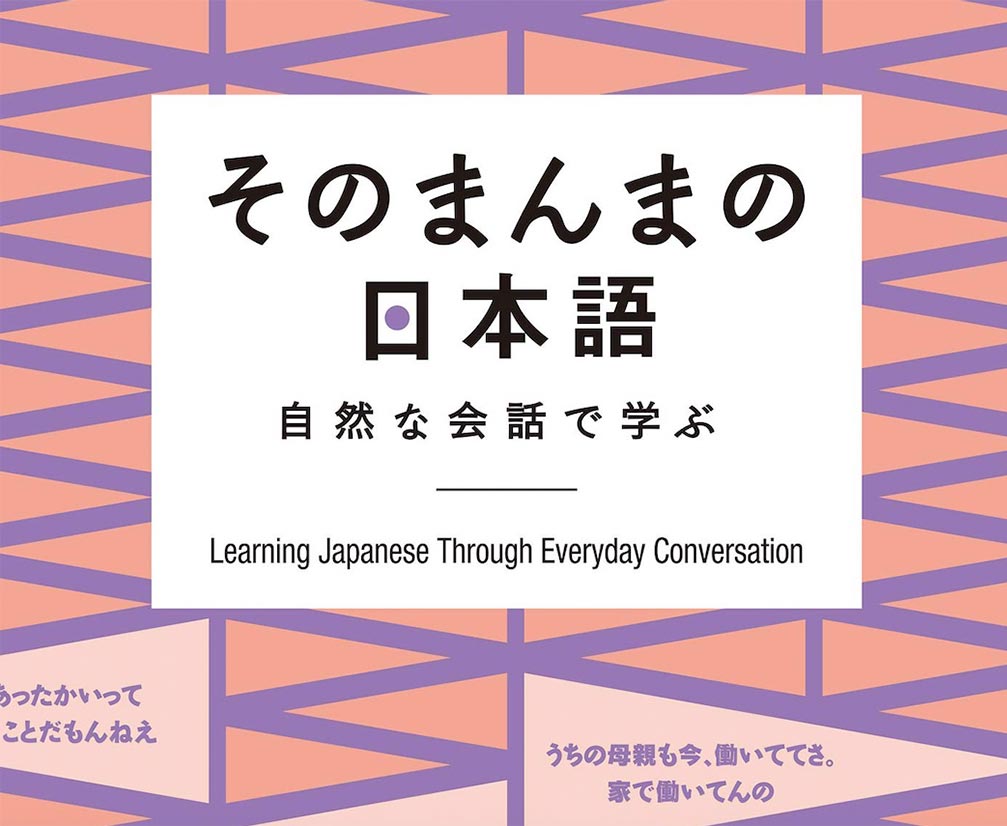
It's hard to avoid "sounding like a textbook" in the early stages of your Japanese studies. While it may be inevitable at first, it doesn't have to always be that way. Try out そのまんまの日本語 if you're ready to breathe some life into your spoken Japanese!
そのまんまの日本語 is an intermediate-level textbook, so you might want to give it a try after you've gone through Genki I and II or their equivalents. Each chapter is built around a dialogue that uses natural language from real-life conversations. The section that follows the dialogue highlights key expressions, and features additional example sentences that demonstrate the meanings and uses of each key expression. The best part is what comes next — a short but in-depth explanation of a certain linguistic feature that is prevalent in the dialogue. This is the section where you'll be un-learning the black-and-white textbook rules you've studied, and gaining a deeper understanding of the nuances of spoken Japanese.
While you'll get lots of reading practice with this book (complete with plenty of furigana too), this isn't the book for you if you're looking to improve your kanji. But if you want a resource that breaks down authentic spoken Japanese, then definitely give そのまんまの日本語 a try.
Speechling
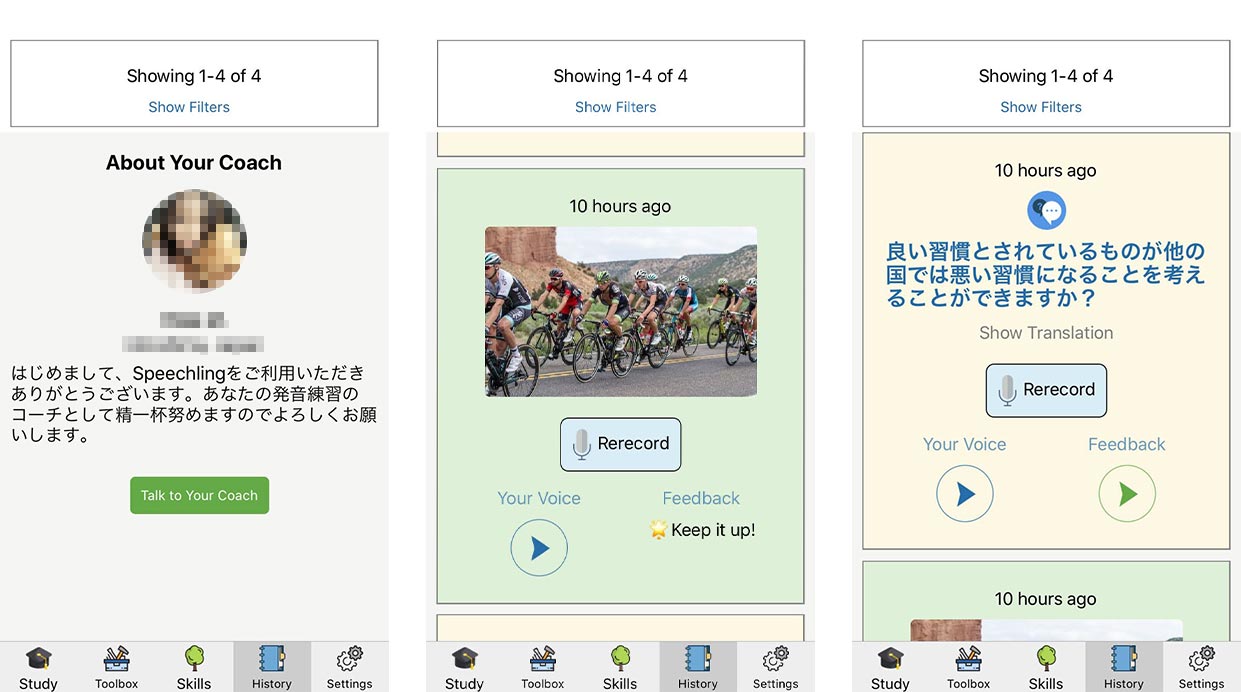
Speechling is an online resource for language learners who are seeking to improve their grammar and pronunciation when speaking. Upon signing up, you're paired with a native-speaking coach who will exchange voice recordings with you. The app offers a multitude of options for corresponding with your coach, such as word-by-word pronunciation practice, picture description drills, and feedback on your answers to questions. After recording your response to the prompt, it's sent to your coach for review. The coach always responded in a very timely manner, usually within just a few hours. She mostly pointed out pitch-accent problems and small grammar mistakes. If none were present, she would simply respond with: 🌟Keep it up!
Speechling is free to use, but the free version is somewhat limited. For example, you can only send your coach ten voice recordings per month as a free user. Ten recordings goes really fast, especially since they have a ten-second limit. You might want to give the free app a try and, if you love it, consider paying for the full version. With a paid account, you can send your coach an unlimited number of voice recordings, and each can be up to 25 seconds long. Speechling is truly innovative, and worth looking into if you want some help with your pronunciation or fine-tuning your grammar in speech! If you're looking for conversation practice, though, you'll want to look elsewhere.
LIVE JapaNews24 ~日本のニュースを24時間配信
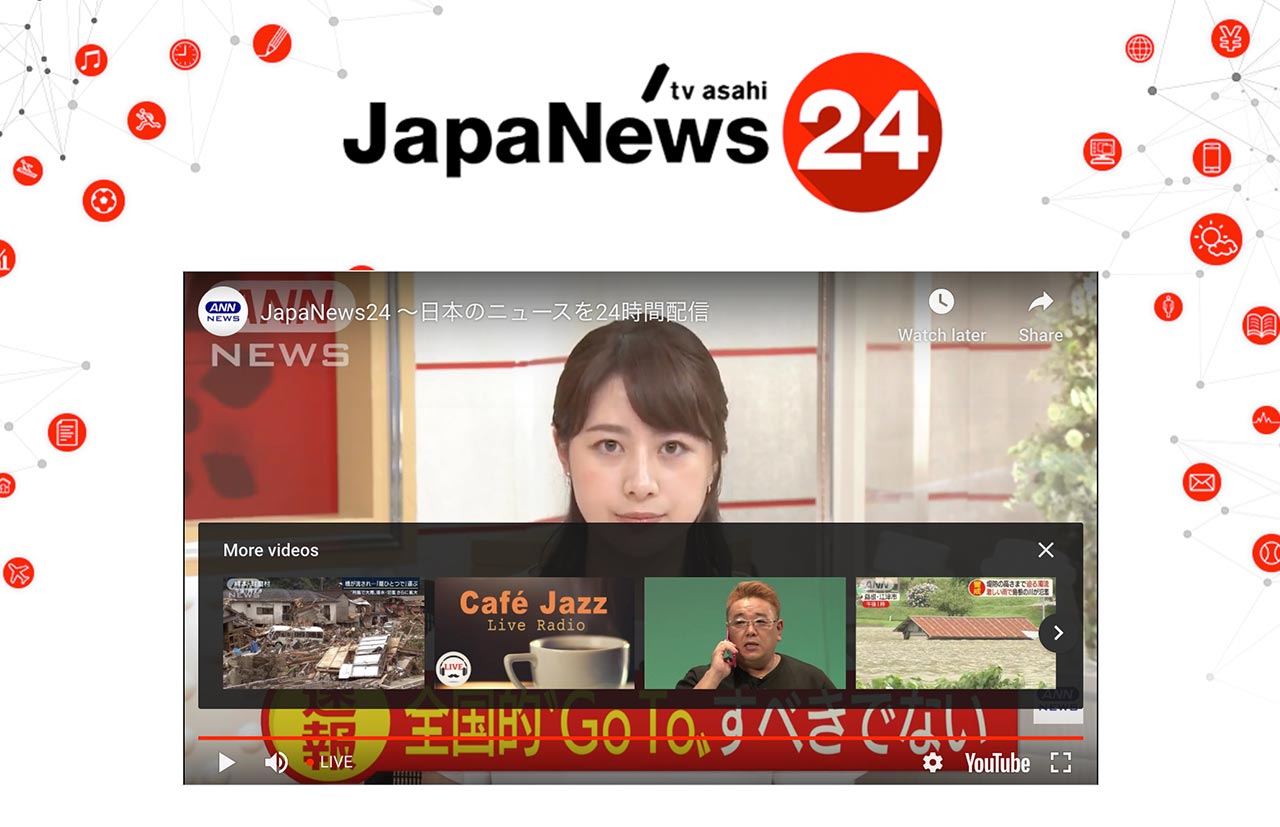
JapaNews24 is a livestreaming news station operated by All-Nippon News Network, or ANN, which is run by TV Asahi Corporation. It uses video clips already made for the Japanese TV news stations and reports what's going on in Japan regarding various things, including politics, natural disasters, crime, trends, and so on.
The pros of this station are that you can listen to natural Japanese news reports anytime, anywhere, and learn about hot topics in Japan. Listening to the language spoken at a natural speed is really good practice to enhance your listening skills, even if you don't always understand it perfectly.
One of the cons is that you cannot pause and rewind the show to figure out the part you weren't able to catch. So, if you are the type of person who wants to understand every single word by listening to material over and over again, this might not be a good resource for you. However, if you just want to expose yourself to natural speaking in Japanese, or if you are an advanced learner looking for an outlet for Japanese news you can learn from, this station will definitely do its job!
読書メーター
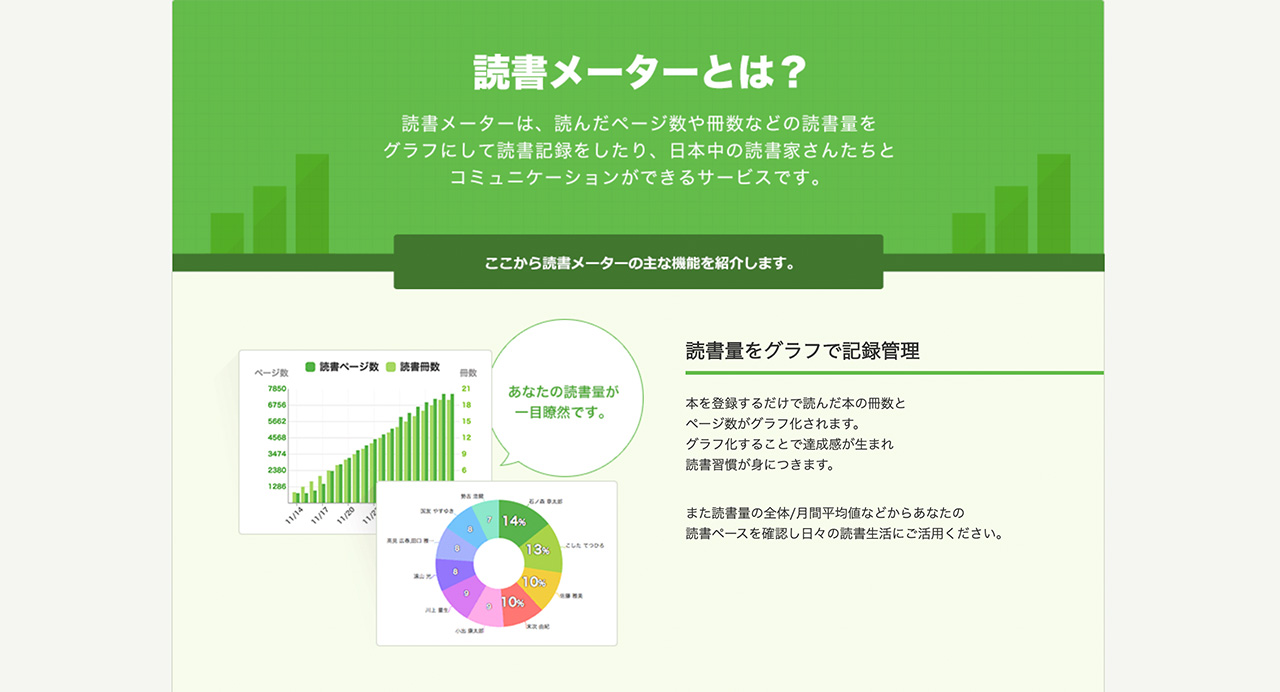
読書メーター (or "book meter") is a Japanese website for readers. This site lets you track your reading history (including manga), write and read reviews, find books you may like, and interact with other people in the community. The site is all written in Japanese but past that everything is straightforward and it is easy to use.
The good thing about this site is not only can you organize your reading and find interesting books, you can also learn how to read and write book reviews from other people's posts and practice writing your own reviews for the books you love. On top of that, you may be able to make some friends who have similar reading tastes to yours. You are allowed to take a peek at their bookshelves, and the site can calculate compatibility based on the books you have in common. If you like the look of a user, you can "favorite" them to follow their updates. Regardless, you can freely comment on other people's reviews.
If you are a 本の虫, or bookworm, this site is worth checking out!
算数事件ファイル 小学4~6年 (おはなし推理ドリル)
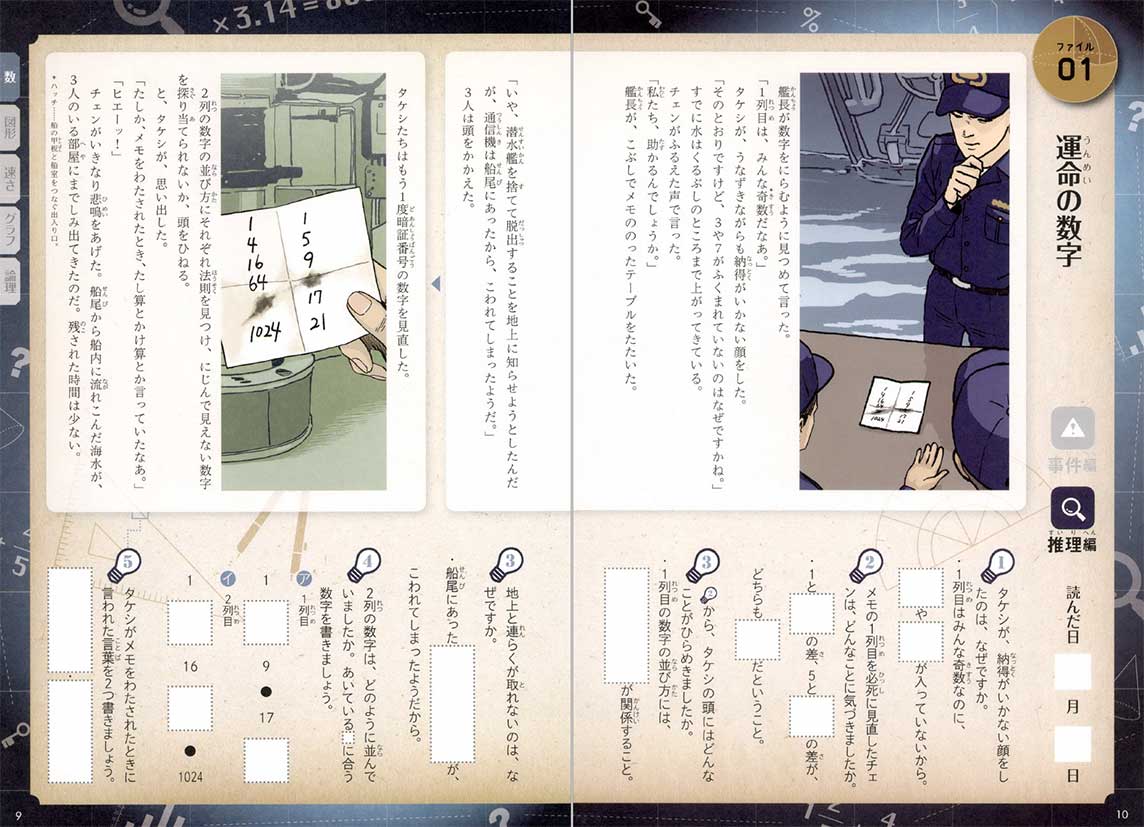
This is a pack of short stories with math and involves mystery solving. Usually, the language level required to understand mystery novels is quite high, so even if you are a mystery fan, trying them out in Japanese might be daunting. That said, this book is written for Japanese children who are in grades four to six. Though probably not for total beginners, there is furigana for difficult kanji and each story is very concise, so it's really easy to read and it's fun.
Moreover, there are quizzes to test your comprehension, and answers to the mysteries. Since the resource is for children and it only requires simple math knowledge, it may not stir your excitement or curiosity that much, but it's really good reading material with the supplemental drills. You can pick up new kanji, vocabulary, and expressions in Japanese as you progress. If you are looking for something different to read, this is a good choice.
KLC Graded Reading Sets: Volumes 6-9
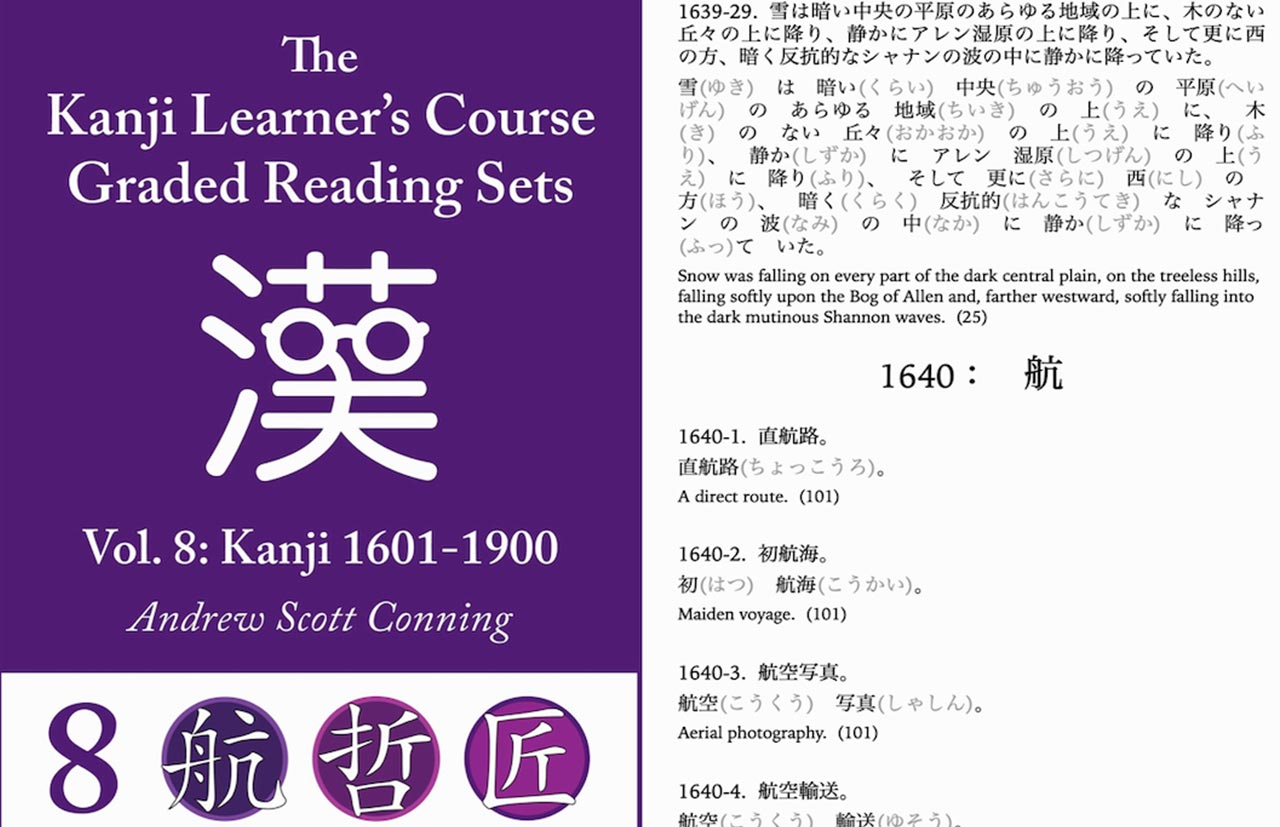
You might remember that we covered this set of graded readers when the first three volumes came out in 2017, and then when volumes four and five appeared later on. After a few recent releases, there are now an additional four volumes, completing the nine-volume set.
The series is based on The Kodansha Kanji Learner’s Course and is designed to be used alongside it, to help you practice the kanji in context. The graded readers themselves don't include information about how to learn the kanji, as this is covered in the Learner's Course. If you are already using this course to study, these readers would be a valuable addition to your studies, as they contain a wealth of reading material to consolidate what you've learned.
Each sentence is first written in Japanese only, followed by the same sentence with readings in hiragana, and then an English translation.
All of the volumes are set out in a similar way, making them easy to navigate. Unlike many graded readers, they do not follow a storyline, but instead provide sentences and paragraphs of increasing length and complexity, which illustrate various possible uses of each kanji. Each sentence is first written in Japanese only, followed by the same sentence with readings in hiragana, and then an English translation. If you read them in scrolling mode, you can start off by reading the Japanese version, before checking your knowledge using the kanji readings and the translation.
Previously available only as e-books, the first two volumes are now also available as paperbacks, with plans for the rest to follow suit. These are mostly intended for those who want to revisit the material during off-screen times. Not sure if this series is for you? You can download a free digital version of the first volume to see for yourself!
考える人のための【上級】日本語読解
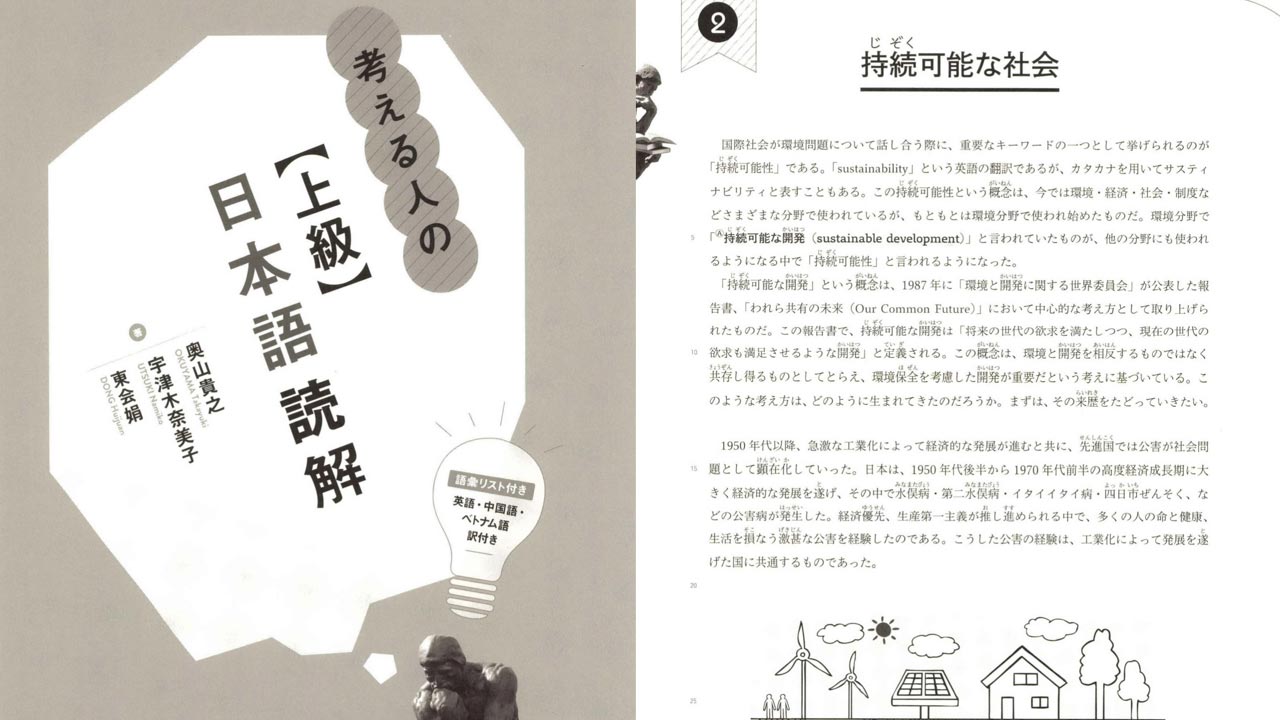
This workbook is designed for advanced learners of Japanese who are hoping to study at university or graduate school in Japan, as well as those who are already studying in Japan and looking to boost their Japanese reading and thinking skills.
The book comes in three parts. The main workbook includes advanced-level reading texts on a range of topics relevant to academic settings. Each text is followed by comprehension questions, and then prompts to encourage critical thinking about the topics covered. This is accompanied by a booklet that lists all JLPT N1-level vocabulary (based on the old Level 1 lists) with their translations in English, Chinese, and Vietnamese, plus an answer booklet.
That's all for this summer edition. Thank you for reading and we hope you enjoyed it! If you discover any new Japanese learning resources, send us a message at hello@tofugu.com or on Twitter @tofugu. Even if it's just new to you, send it our way. We're always on the lookout for quality resources. We'll see you for the fall edition. Ciao!
